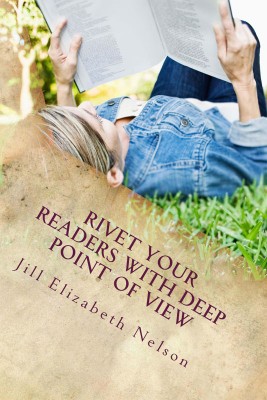Always on the prowl for interesting articles I found these two great blog posts on deepening your POV as a writer and found this so interesting that I had to share them… – JW
Deeper POV
From: iuemag.com
by Jody Lebel, Western Massachusetts
When you write in deep POV (point of view) you will never have to say s/he felt, s/he thought or s/he knew… realized… speculated… wondered… etc. These phrases create narrative distance. They are ‘telling’ sentences. The reader is at arm’s length, not in your character’s head where they belong.
If we are deep into our character’s psyche we can proceed directly to whatever it was s/he was thinking. In deep POV we get straight to the point exactly like the person would, creating ‘showing’ sentences. Here are some examples.
Before: He wondered if Kim would show up at the picnic.
After: Would Kim show up drunk at the picnic like last year and spoil it again?
Before: Two men approached the house. I hoped it wasn’t the cops again.
After: A pair of strangers walked briskly up the walk towards the front door. Not the cops again.
Before: He thought the dog needed a bath.
After:What a smell. He eyed the pristine bathroom then studied the muddy animal. What that dog needed was a good bath.
Another way to write with a deeper POV is to remove the was/were and rephrase with a hook. Start with a basic sentence: The night was dark. Pretty boring! Your reader is yawning…… Read More http://www.iuemag.com/june2012/deeper-pov.php
~~~~~~~~~~~~~~~~~~~~~~~~~~~~~~~~~~
Deep Point of View
Katie Ganshert June 18, 2012
 Deep point of view allows the reader to feel and experience exactly what our characters feel and experience. Authors who do deep point of view well often create stories that are highly engaging – where the characters come to life and the reader gets lost in the pages.
Deep point of view allows the reader to feel and experience exactly what our characters feel and experience. Authors who do deep point of view well often create stories that are highly engaging – where the characters come to life and the reader gets lost in the pages.
Once we get the hang of it, deep point of view takes our writing to the next level.
So when I saw a tweet about this book called Rivet Your Readers with Deep Point of View, free on Kindle for a limited time, I was immediately intrigued. I hadn’t read a craft book in awhile, so I hopped on over and downloaded it.
I’m super glad I did.
It is a super quick (it’ll take you an hour, tops), informative read.
Not only did I freshen up on some important writing techniques, I now have a craft book I can recommend to lots and lots of writers.
The author (Jill Elizabeth Nelson) addresses techniques that so many writers fail to employ.
Mistakes I see all the time whenever I critique a piece of writing or judge a contest entry.
Two of the BIGGIES:
- Authorial Intrusions
- Prepositional Tells
Authorial Intrusions
Anytime you put an invisible narrator between the reader and the character, you’ve inserted an authorial intrusion.
Phrases like she wondered, she felt, she saw, she wished, she decided are all examples. Purging them from your manuscript will take your prose to the next level.
For example:
She realized where she put her purse.
Can be changed to…
Oh, right. That’s where she left her purse.
Another example:
She spotted the lime green bike swerving through traffic.
Can be changed to… READ MORE http://katieganshert.com/writing/deep-point-of-view/

























 Watch this Video on A Better Way To Fight Harmful Free Radicals
Watch this Video on A Better Way To Fight Harmful Free Radicals
